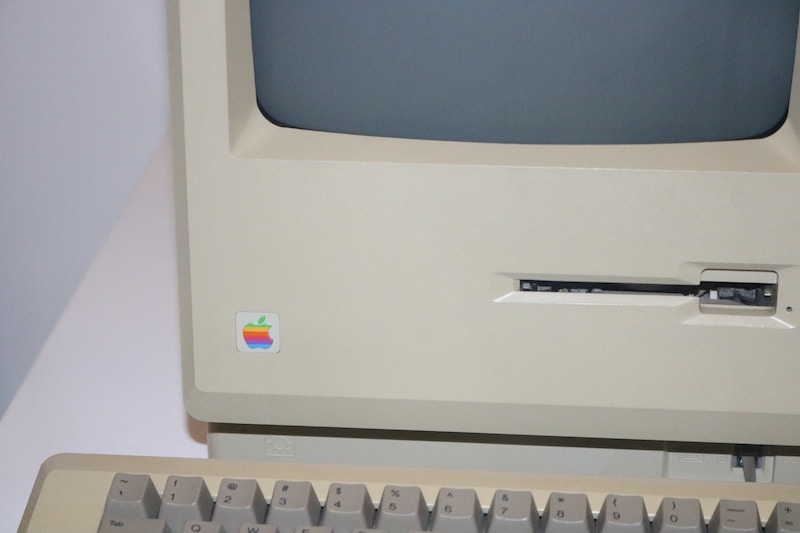One of the topics I find myself coming back to again and again, the raison d’etre of PowerHub, is digitalization. I can draw a clear line between successful renewable energy asset management companies that are taking full advantage of digitalization to maximize their growth, and those that aren’t. What better time than the start of a new year to talk about “going digital”.
That’s because, while of course we’re an asset management platform, we also think of ourselves as partners in helping our clients embrace digital tools and approaches.
At the core of digitalization is a commitment to using the extra time gained from the “automation” to create new, clear, and meaningful value for customers. And isn’t that what we all want?!
Let’s note nice and early on that digitization is different than digitalization, but we’ll come back to the definitions later.
I would normally leave the “why this is relevant to you” portion of the blog post until the end to really drive the value home. But in this case, I’ll say it right at the beginning. I know how intimidating digitalization can be. It is not an easy process. It’s not a destination, but a journey. It can take months or even years, and it can shake up processes and team structures.
While I would argue that digitalization is useful for any business, it’s especially critical in renewable energy asset management, or any facet of green energy. In fact, it’s no longer a choice.
It’s a necessity, not just because of pressures and realities in the market, but because of the very nature of our industry. We need to be ruthlessly cost competitive with the more traditional (less green) energy sources. If we want to compete globally, we need to be as lean, effective, and digital as we can be.
Then, with the kind of efficiency and value that only uncompromising digitalization can bring, renewable energy sources can overtake the fossil fuels that are burning our planet.
So if you’re questioning why digitalization is important, consider that.
What is digitalization?
Digitalization leverages software tools to maximize your company’s effectiveness and efficiency. There are three steps: first you digitize, then you digitalize, and then you digitally transform your business. It’s a journey.
The first step—digitization—is the translation of all of your printed documents into electronic formats (we’ve written about proper document management for your reading pleasure). This conversion can take quite a bit of time, and, especially for established companies, can be a daunting task.
The second task—digitalization—is the conversion of your processes, and everything else that makes up your actual business, into digital formats. It’s focusing on operational improvements through the automation of business processes. This is why digitization comes first…you can’t digitalize without digitizing. It’s using the data and insight you’ve gained to automate mindless work, so your team can focus on high-value tasks instead.
Perhaps the most overlooked, and important, aspect of the journey, comes last: digital transformation. By undertaking the first two steps, your renewable energy asset management company will have created 1) a massive set of organized data, and 2) more efficient, automated processes you can leverage to create a better value proposition. You can use all of that insight and free time to think about new or improved products and services.
You can create and deliver new value for your customers, and if not fully transform, then clearly “upgrade” your business.
When do I know that I need to digitalize?
You have to consider how complex your business is.
If you’re managing a small group of simple assets, going the “full-blown digital transformation” route is maybe not that important (though it could help you scale down the line).
But if you’re running a complex business with differing renewable energy assets, digitalization is imperative.
There are many realities in the market that reinforce the need for asset owners managing a high number of complex assets to go digital. It all comes down to this: asset managers, owners, and larger companies simply do not have a choice. The longer you wait, the farther behind you’ll fall.
Competitors that started the process two years before you will advance as they start to deliver new value, while you struggle simply to copy your documents from paper to electronic. In a few years, the gap between you will grow greater and greater.
So it’s strategically imperative to start the process, and soon.
How do I begin the process of digitalization?
You often start digitalization—or any business-wide overhaul—with the lower hanging fruits. Look at two metrics all businesses are after: efficiency and effectiveness. Doing the right things and doing them the right way.
For a lot of people, that’s actually a hard concept to grapple with. They assume that a process that “kind of” works isn’t completely broken.
This mentality has got to be one of my biggest pet peeves.
I’ve met so many renewables asset managers that don’t question the fact that they log into 10 different systems and plug in data manually to get a report. Yes, it works. But it’s not efficient.
We need to create value when we work, not just get things done. If you’re constantly busy, it doesn’t mean you’re creating a lot of value. It might mean that your underlying processes are inefficient. And if you find yourself unmotivated to ask or answer these hard questions, please go back to paragraph 7.
Here are the steps you need to take to digitalize your business:
- Digitize: convert all of your documents to digital.
- Centralize: if your digitally-formatted documents are spread across different platforms, you need to find a system to bring them together.
- Digitalize: this is highly dependent on your business, but now that you have all of your information in one place, start to convert your processes. Pick a task that is either so mind numbing and time sucking, or absolutely critical in your business, and automate the aspects of it that you can.
A lot of the work we’ve done for clients in this area is around invoicing/billing. Asset managers spend a lot of time and energy with getting or giving money, which are the core aspects of their business. By helping them automate these tasks, we’ve moved clients from 20-30 day invoicing periods to 1-3 days…that’s digital transformation. The super important and/or super mind–numbing task for others could be around reporting for some. Others find sending notifications for activities or keeping on top of deadlines stands to benefit from automation.
Every business, even two asset management companies working on solar projects in the same continent, is different. You need to pick a process and a partner, and start there.
The reality is that lots of people have a great tool that sounds like it’s the answer to all of your problems, but I would recommend partnering with a vendor who will work with you to configure their solution for your needs. That’s the only way all of the benefits that have been promised will be delivered.
Why is digitalization so important?
Digitalization is the process of centralizing information in a more accessible and efficient format (digital). Then, using it to craft a more efficient workflow. And in turn, a more efficient (aka profitable) company.
Without digitalization, work has a tendency to be absorbed in the organization. But the quality of that work becomes less and less questioned over time.
Are these reports telling us what we need, or are we just used to writing them this way? Are all of these meetings necessary, or did we set them up months ago and just keep showing up? Do we need all of these Excel sheets? Is this the best file structure?
As I explained above, people have a tendency to say, “We’re getting by and that’s enough”. Digitalization is proof that that’s not enough. You can and have time to do more, if you manage your tasks better.
As a manager, you want highly skilled, highly motivated people. So really, do you want your people to focus on low-value added activities that are repetitive? Or do you want them to come into an organization that’s committed to solving complex problems while holding itself accountable to the highest standards of efficiency, transparency, and accessibility?
These are all benefits to digitalization. If your employees know that your organization is trying to fix these issues, improve itself, and transform employee roles into more meaningful and less repetitive jobs, they’ll help you through the process.
I’ll remind you of what I said at the beginning of this post: that there are very real pressures in the market that make digitalization even more relevant for renewable energy. Year after year, asset owners are seeing increasing costs in each aspect of their business, while operations get more complex.
You have to do more, on a wider set of assets that aren’t standard, at a more competitive cost.
If you’re an operator, you’re focusing on the efficiency of your team and the fact that transparency is increasingly important to customers. Accessing the right information at the right time in the right format can make or break your service team.
Digitalization is no longer a choice. It is a necessity.




